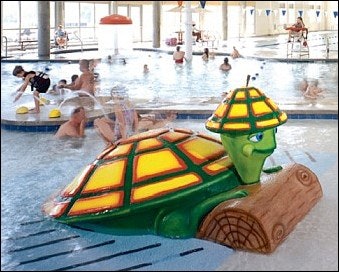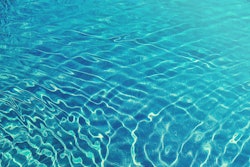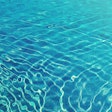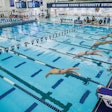Chlorine and bromine, effective sanitizers with some distinct disadvantages, are increasingly augmented with supplemental means of water treatment

Natatoriums, with their expanding bodies of water and increasing focus on leisure elements, are more complex than ever before, heightening the challenge of maintaining balanced water and air quality within the indoor pool environment. Shallower water depths, an increased amount of water agitation through the addition of larger, more interactive water features and these pools' increased popularity are bringing about some of these challenges. Traditional water treatment systems are often taxed beyond their capability to maintain water quality under these circumstances, and this in turn can affect the air quality within these facilities. The understanding of the link between water and air quality, in particular, is relatively recent - and for this reason, many designers, owners and operators are turning to supplemental water treatment systems to help bridge the gap between today's requirements and traditional solutions.
The pool industry's most common forms of chemical disinfection are chlorine and bromine, with chlorine the predominant choice by a wide margin. Chlorine is a somewhat generically used term in the pool industry, representing various chlorine-based compounds. Chlorine can be purchased in its gaseous state, as a solid or as a liquid. The purest form of chlorine is in its gaseous state, where 100 percent of what is delivered to the pool is available for disinfection. This is also chlorine's most volatile form, and for this reason it is rarely, if ever, used in indoor facilities. Yet, it should be noted, when additional precautions are taken in handling the gas (under the supervision of trained personnel), gas chlorine can be an extremely cost-effective way of disinfecting an outdoor swimming pool.
The liquid and solid compounds of chlorine are the most prevalent, and are used in both indoor and outdoor applications. The solid form of chlorine is found in the compound of calcium hypochlorite, which consists of 67 percent available chlorine and 33 percent other compounds. Calcium hypochlorite can be delivered in pails or drums, and is introduced into the swimming pool either through an erosion feeder or, when mixed as a solution, fed into the pool system using a metering pump. Bromine is also a solid compound, and is introduced through an erosion feeder; however, it does not share the popularity of calcium hypochlorite.
The last and most widely used form of chlorine is liquid chlorine in the form of sodium hypochlorite. Sodium hypochlorite consists of about 10 to 12 percent available chlorine and 88 to 90 percent other compounds, and tends to degrade over time. Some owners complain that the liquid chlorine they receive contains even less than 8 percent available chlorine when delivered. It can be transported in 55-gallon drums or by bulk-delivery trucks, and stored in the owner's storage tanks. It is introduced into the swimming pool through the use of one or more metering pumps.
One of the major nuisances of chlorinated indoor pools is the formation of chloramines, which result from a chemical reaction between chlorine and ammonia and organic nitrogen compounds that are broken down in the water. This chemical reaction is what produces mono-, di- and tri-chloramines, which are responsible for the "chlorine smell" present in indoor facilities. These and other byproducts of the chlorine disinfection process drive the need for the introduction of supplemental water treatment systems to achieve better water quality, eliminate unpleasant odors and create a better environment for indoor aquatic patrons.
There are three main supplemental means of water treatment in use today: ozonation, ultraviolet (UV) irradiation and potassium monopersulfate. Each of these are considered supplemental since all existing national swimming pool codes require that a residual of either chlorine or bromine be maintained in a swimming pool for the sanitation of pool water. As such, each of these processes are designed to maintain better water quality and better air quality than can be created by either chlorine or bromine as a stand-alone system.
Ozonation Ozone (O 3 ) is an unstable gas with a halflife in air of about one hour, which means that it is not a substance that can be manufactured off-site and transported to a facility. Ozone is produced by passing dry air through a very high electrical discharge called a corona. This causes the oxygen (O 2 ) molecule to split and reform as ozone (O 3 ). This is both an advantage and a disadvantage. The advantage is that because ozone is generated as demand dictates, there are no on-site storage requirements. The only presence of ozone is in the piping between the generator and the injection point, and in the off-gassing system of the contact chamber. An additional feature of vacuum-based systems is that any leaks in the system will actually draw air into the system instead of leaking ozone out of the system. Ozonation's disadvantage is in the capital investment of the equipment that is required. However, a well-maintained ozone system will operate for 10 years or more, depending on the quality of the equipment.
Ozone is the strongest water-treatment oxidant available to the aquatic industry, an outstanding sanitizer with twice the oxidation potential of chlorine (107 percent) and the capability of disinfecting selected microorganisms 60 to 100 times faster. Ozone also works as a microflocculant, helping to coagulate particulate matter within the water and thus enhancing the filtration process.
Ozone systems have been used extensively in Europe for many years for both disinfection and clarification. In the United States, ozone systems are not mandatory but can serve a unique role through supplementation of the chemical process.
In a traditional vacuum-based sidestream ozone system, a booster pump draws 25 to 33 percent of the recirculation flow rate of the pool off the main recirculation line. The booster pump provides enough energy to force the water through a venturi, where the mixture of air and ozone is actually drawn into the system by the vacuum created. The now ozonated water passes into a contact chamber, where the ozone is allowed to mix with (or "contact") the water. This is where the real work of the ozone is done. Typical contact chambers are sized to maintain from two to four minutes of contact time. Excess ozone and air are bled off the top of the contact chamber, and are passed through an ozone-destruct vessel before being vented outdoors. The disinfected water is drawn from the contact chamber and remixed with the remaining water. If this process occurs prior to the filtration system, any residual ozone in the system acts as a flocculent to the main flow and can help the filtration process. If any residual ozone still remains in the water, the filter sand acts to break down this remaining ozone. Under U.S. codes, even trace amounts of ozone are not allowed back into the swimming pool.
There are numerous ozone systems on the market that operate as vacuum or pressure systems, with or without contact chambers and with varying dosing rates. There will always be an offset between a system's size and capacity and its cost. What is important is that a system be designed to maintain dosing rates high enough to perform the tasks that the system is being asked to do - eliminate chloramines, disinfect pool water, serve as a flocculant or all three.
UV Irradiation Ultraviolet (UV) light is an invisible wavelength of electromagnetic energy that falls between the spectrum of X-rays and that of visible light. UV light has long been known to destroy virtually all known forms of microorganisms and viruses by altering them at the DNA level, thus rendering them unable to replicate. The most effective single wavelength is typically generated at 254 nanometers.
Low- or medium-pressure UV lamps are most typically used within the pool industry for generating UV light. Low-pressure lamps, the oldest source, boast efficiencies of 25 to 30 percent and lamp lives of about 8,000 hours, but are very sensitive to water temperature. The advantages of these lamps are that they are mass-produced and easily replaced. The newer medium-pressure UV lamps are mercury vapor fixtures, which feature efficiencies of up to 35 percent and lamp lives up to 10,000 hours.
The amount of energy to which a liquid is exposed while passing through the chamber is expressed in microwatt-seconds per square centimeter (µWsec/cm 2 ). This is a measurement of the lamp output in watts, the length of time the water is exposed and the volume of water being treated. The same value of µWsec/cm 2 can be accomplished by using a short exposure with high-intensity UV lamps or a long exposure using lower-intensity lamps. A vast majority of microorganisms are destroyed at less than 10,000 µWsec/cm 2. While these systems will destroy chlorine byproducts, they cannot aid in the oxidation of pool water contaminants.
A typical system consists of a control cabinet, a power cabinet and a stainless steel chamber that contains either a single or multiple UV lamps as needed to achieve a dosing rate of 30,000 to 60,000 µWsec/cm 2 . The chambers are placed within the main recirculation line.
Newer and larger systems with more efficient lamps, which are capable of handling much higher recirculation rates than those previously available, are now coming onto the market, making UV a more viable system. The advantages of the newer higher-dose systems to the indoor pool market are in the system's decreased initial capital costs and its ability to both kill bacteria and viruses within the pool water and destroy chloramines. The disadvantage of the system is that by its nature it cannot provide the oxidation of pool water contaminants.
Potassium Monopersulfate Potassium monopersulfate (KHSO 5 ) is a chemical that has long been used as an alternative to breakpoint chlorination in swimming pools. Potassium monopersulfate is a reasonably good oxidant, with an oxidation potential 44 percent higher than chlorine, but it is not a good sanitizer. Potassium monopersulfate systems therefore rely on their combination with chlorine-based systems to be effective.
In recent years, potassium monopersulfate has taken on a new turn as systems and procedures have been established to combine the oxidation characteristics of potassium monopersulfate and the disinfection characteristics of chlorine. By simultaneously feeding chlorine and potassium monopersulfate into a pool, a balance can be established where the chlorine is introduced as the demand for disinfection increases and the potassium monopersulfate is proportionally introduced to oxidize the mono-, di- and tri-chloramines that result from the disinfection process. By eliminating the chloramines in the water, the quality of the water is greatly improved, eliminating the need for periodic super-chlorinating of the pool and in turn improving the air quality within the natatorium.
The oxidizing strength of chemicals in water can be measured with a specially designed probe. As all oxidation reactions involve a reduction that can be measured as a current or electrical potential, the term has been called Oxidation Reduction Potential (ORP). An ORP probe cannot distinguish between different types of oxidants within the water, only that a potential exists. Water with a little chlorine and some ozone or potassium monopersulfate can give the same reading as water with only chlorine or only potassium monopersulfate. Because of the inability of standard ORP probes to distinguish between different pool chemicals, one disadvantage is that manual testing of the true free chlorine levels within the pool must be performed so that the manual adjustment of the proportional feed system can be maintained. Additionally, a buildup of disulfates can occur in these pools, which has been known to cause skin irritation in some individuals.
Within the pool industry, two manufacturers have developed and marketed systems and procedures for the proportional feed of potassium monopersulfate-based chemicals in swimming pools. USFilterStranco's Environmental Control System (ECS) and Chemtrol's Automated Chloramine Treatment System (ACT) are both systems that utilize modified versions of this technique. The two systems differ primarily in the function of the automatic chemical controller that is used to monitor and feed the chlorine, pH adjustment and potassium monopersulfate-based solutions.
The common goal of all these systems is to provide a higher level of water quality and therefore better air quality than traditional chlorine or bromine systems can provide. Ozone systems provide the most direct solution by introducing a strong oxidizer that not only kills organics and eliminates chlorine byproducts, but also oxidizes them. This comes at a higher initial cost with lower annual operating and maintenance costs. UV systems provide the ability to kill organics and eliminate chlorine byproducts without the full contact of an injected ozone system. UV systems come at a lower initial cost and low operating costs, with higher periodic operational costs (primarily lamp replacement). Potassium monopersulfate systems provide the continuous introduction of an additional oxidant (a potassium monopersulfate-based solution) on a proportional feed to the chlorine sanitizer. This system is lower in initial and maintenance costs, but higher in annual operational costs (because of the introduction of additional chemicals to the pool).
With every type of supplemental water treatment system that is available today, there will be a level of effectiveness with an additional cost attributed to its use. Which system is right for a specific facility, operating budget or maintenance budget is something that each facility operator will have to determine.




































